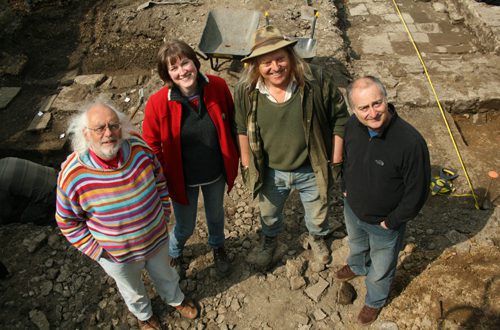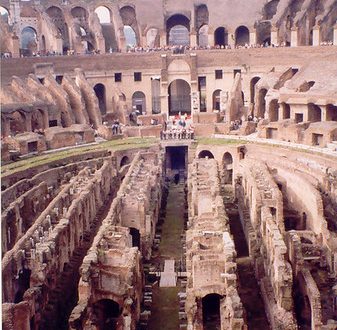Iran has taken a step closer to its goal of moving its capital away from Tehran to a new, as yet unbuilt location near the town of Qom. This seems like an extreme move but it’s one that has been repeated throughout history – as far back as the Egyptian dynasties of the Middle Kingdom, in ancient China and many times during the Roman empire.
Sometimes there are practical reasons for capital-moving. In Iran’s case it claims that Tehran, a city of 12 million people, sits on 100 seismic fault lines and is therefore a major natural disaster waiting to happen. There have been examples of relocations for practical reasons in history too. Constantine I may have chosen to build his ‘Nova Roma’ at Byzantium on the Bosphorus because it gave access to the Black Sea, and was also a good base for campaigns against the Goths. That the site of Constantinople lacked fresh water – 200km of aqueducts had to be built to provide enough – and that it was vulnerable to attack from the north west, were two weakness that Constantine overlooked.
Moving Capitals in the Ancient World
So moving a capital city isn’t always the wise thing to do. Nevertheless, leaders have been packing up their bags and moving their seats of power as far back as the Egyptian Middle Kingdom in around 3,000 BC (probably long before then too). Several millennia later, it was also a strategy that enabled Roman emperors to keep power as the empire evolved and there was a need to be nearer to areas of commerce or conflict.
Ancient Egypt
In Egypt’s Old Kingdom, Memphis was the capital from 3,100 BC until around 2,040 BC, as well as being the capital of Lower Egypt. But Mephis lost out to Thebes when the Theban kings won a civil war and designated their home city as the capital. This shows another aspect of capital moving that goes beyond practical or strategic considerations and is also present in some modern examples: an authoritarian leader has far more power to decide to uproot a capital city and over-rule any opposition, compared to a democratic government. In fact, according to this article by Sean Williams, ancient Egypt had more than a dozen capital cities throughout its (very long) history.
During the New Kingdom period, Thebes rose to prominence but the capital was to move again – this time to Akhetaten (Amarna) during a period of political instability under the heretic king Akhenaten (1,351-1,337 BC). The new city of Akhetaten was built in honour of Akhenaten’s new-found religious cult of Aten – but the move was not well-received by the general public of ancient Egypt and in particular by the priests of Amun, who viewed Akhenaten’s new one-god religion as heretical. After Akhenaten’s death, the designated capital returned to Thebes and Memphis. By 1319 BC, just 20 years after Amarna was built, the new city was abandoned.
In 331 BC Alexander the Great and his general Ptolemy founded a new capital for Egypt: Alexandria. The city, famous for its ancient lighthouse and library, remained Egypt’s capital throughout the Roman era and until Muslim invasion 1,000 years after its foundation.
The Chinese Empire
The ancient Chinese empire also had its fair share of capital-swapping. Xi’an was the capital from the Qin to the Tang dynasties (221 BC to 904AD). Following the Qin dynasty, the Han dynasty decided to move their capital away from Xi’an to Luoyang in Henan province. There were traditionally four ancient capitals of China (Beijing, Nanjing, Luoyang and Xi’an). Kaifeng, Hangzhou, Anyang and Zhengzhou have been added to the list in the past 100 years (following archaeological discoveries) and many more capital cities have also been identified – not surprising for an empire with such a time-span and geographical reach. To this day, the choice of Beijing as capital has been questioned – with the harsh winters, lack of a nearby fresh water supply and distance from China’s main food sources cited as reasons why Nanjing would make a better capital.
The Romans
During the third and fourth centuries AD, the Roman emperors moved their seats of power several times. Constantine I finally shifted power eastwards when he moved his court to Constantinople in 330 AD. The Roman empire survived intact with two capitals for another 65 years before it was divided definitively into the West Roman Empire and East Roman Empire in 395 AD.
Before Constantine I, there had been several other capitals including Mediolanum (Milan) and Ravenna. These two cities were chosen because they gave the emperor better access to central and eastern Europe. Nicomedia was also the capital of the Eastern Roman Empire for a while from 293 AD. Colonia Agrippina (Cologne) and Augusta Treverorum (Trier) were both seats of power of the Gallic Empire when it broke away from Rome’s rule (260-275 AD) and Trier also became the capital of the Western Roman Empire until Constantine began building his new capital at Byzantium. The late third and fourth centuries were a time when the shape and power-balance of the empire was shifting new capitals sprung up accordingly as emperors established their new power bases or tried to dominate existing territories.
An Age-old Strategy
So relocating a capital city isn’t new by any means. In modern circumstances it can be a bad sign for democracy in a country, while some examples from antiquity show that a change of capital often signalled a political and cultural sea-change. When Alexandria became the capital of Egypt in 331 BC, it heralded the beginning of the Ptolemaic kingdom and the spread of Hellenic culture to Egypt. The rise of Constantinople 660 years later also coincided with the rise of Christianity as the dominant religion of the Roman Empire and the beginnings of the Byzantine Empire.
Some modern examples of capital relocation are more ominous. In 2005, Burma’s military junta decided to build a new capital at Naypyidaw, in a remote jungle location, far from the traditional centre Rangoon (Yangon as the generals renamed it). Four years later, reports say that Naypyidaw is still a soulless ‘ghost town’ where state officials can live in luxury a stark contrast to the rest of the country.
There have been many other capital moves in the 20th century 13 between 1950 and 1990 according to Edward Schatz, an associate professor in political science at the University of Toronto. In a 2003 paper on why states move their capital cities, Schatz wrote: Projects of such an enormous scale are easier to pursue in the absence of democratic procedures. In authoritarian political systems, the lite might accept the enormous financial costs of such a move because they anticipate future symbolic, political, and economic gain.
In 2000 Malaysia moved its capital from Kuala Lumpur to Putrajaya; Kazakhstan’s capital became Astana instead of Almaty in 1997; Brasilia became the capital of Brazil, rather than Rio de Janeiro, in 1956; while Nigeria chose Abuja over Lagos in 1975. The reasons vary, but often come after political changes, upheavals or power shifts (Germany’s capital Bonn moved to Berlin in 1990). Many capital changes happen under authoritarian regimes such as that of Burma.
So Iran isn’t the only modern country to toy with the idea of trying out a new capital city. In 2000 there was speculation that Russia’s then president, and present prime minister Vladimir Putin, might move the state’s seat of power from Moscow back to St Petersburg. In 2003, Plaid Cymru MP Adam Price suggested that Liverpool should be Britain’s capital, rather than London. Nothing has come of these two suggestions yet but history tells us that our capitals are not as immovable as we imagine them to be.
Photo by .faramarz on Creative Commons License.



